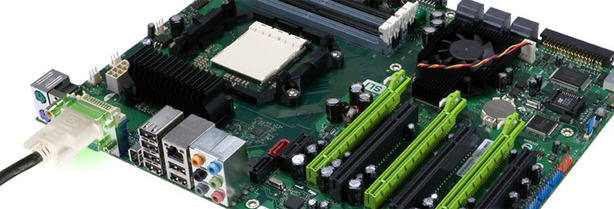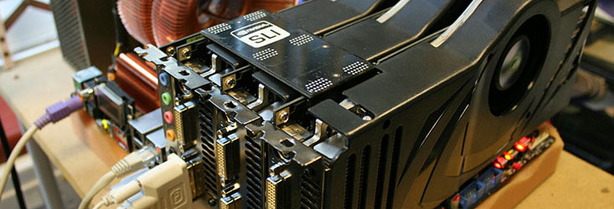
Introduction
On Friday, we published a detailed look into Nvidia’s Hybrid SLI technology and, if you’ve read the article, I’m sure you know that there were some questions I had asked that remained unanswered. From my talks with several partners—and also with Nvidia itself—there seemed to be a lot of confusion and nobody really seemed to know exactly what was going on – or at least, couldn’t talk in great detail about the technology at this early stage.The problem with that was that it left a lot of questions unanswered and it’s hard to understand a technology when there is very little information available on it. After talking in London on Friday afternoon with several Nvidia representatives that have worked closely with the engineers on this project, I am pleased to say that the company has answered almost every question I asked of it.
There were some questions that the guys couldn’t answer themselves; for those questions, I talked on the phone with Drew Henry, General Manager of Nvidia’s MCP business – he was able to answer the questions and provided some vital insight into where Hybrid SLI is going.
Display Support
Probably the biggest downside I found with the technology so far is the fact that you cannot run multiple digital displays in HybridPower mode and if I’m brutally honest, the reality isn’t any better. Not only is there just a single DVI display output on the nForce 700a series motherboards, but the one included is only single link – this means that you can only run a maximum resolution of 1920x1200 over the DVI connector.I don’t quite know why, but this is something that Nvidia chose not to mention in the initial Hybrid SLI briefing it held in Las Vegas. Of course, there are many ways to spin this, but given the company’s initial reluctance to share much in the way of detail on the technology, it’s almost as if it hadn’t decided the PR strategy for Hybrid – in other words, it hadn’t decided what it did and didn’t want to talk about.

Nvidia's nForce 780a SLI and 750a SLI chipsets only have support for one digital display output
The problem was that Nvidia’s caginess only led to more questions being asked – every time I got what was essentially a no comment, I ended up asking similar questions with slightly different angles until I got something close to the answer I was looking for.
During my talk with Drew about this, he explained that there is still a hell of a lot of development work to be done on Hybrid SLI and this is the first generation of the product. He implied that it may be 24 months before Nvidia is truly happy with this technology, but there came a point where it needed to get more feedback on the technology and that’s what we’re seeing today.
This isn’t going to happen overnight, and I’m sure the FAE and QA team wouldn’t be too happy if, all of a sudden, the whole of Nvidia’s product line started supporting HybridPower (and GeForce Boost, for that matter) – that’s a hell of a lot of quality analysis testing to be done!
Drew was well aware of the fact that dual-link DVI is almost essential for enthusiasts running three of the fastest graphics cards available in a 3-way SLI configuration. He said that he doesn’t see the first generation of this product as an all encompassing solution – he sees it as an ongoing development process in much the same way that SLI has been since its inception. And if you can remember back to when SLI first came to market, there were so many limitations with the technology, including support for just three games: Half-Life 2, Doom 3 and Far Cry.

Those of you considering 3-way SLI with HybridPower enabled GPUs will be limited to 1920x1200 with the first-generation Hybrid mGPU technology
The company is figuring out how to implement support for dual DVI—and even dual dual-link DVI—in future products, but understandably Drew wouldn’t give details of when we can expect to see support for this in the company’s motherboard chipsets. Of course, there is also the question of DisplayPort and, as that’s something Nvidia is supporting, he said that it’s something that Nvidia will look at when it’s designing future products.
I also spoke to Nick Stam, Director of Technical Marketing for Product Reviews at Nvidia, about multi-display support—but this time from a different angle. I asked him about multi-display support on SLI in the future—not just on Hybrid—because with Hybrid SLI, it’s now possible to run multiple monitors in GeForce Boost mode, even though one has to be analogue if you’re using the first-generation hardware implementation.
He explained that the company wasn’t going to stop at implementing multi-monitor support into Hybrid SLI and acknowledged that it’s something Nvidia will support with conventional SLI in the future as well. Nick stopped short of saying when we can expect the driver to be rolled out, but it’s good to hear that us multi-monitor users are getting some love from the driver team.

MSI MPG Velox 100R Chassis Review
October 14 2021 | 15:04








Want to comment? Please log in.